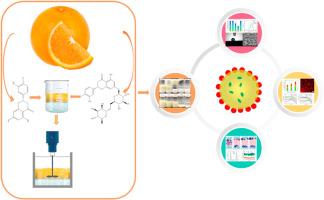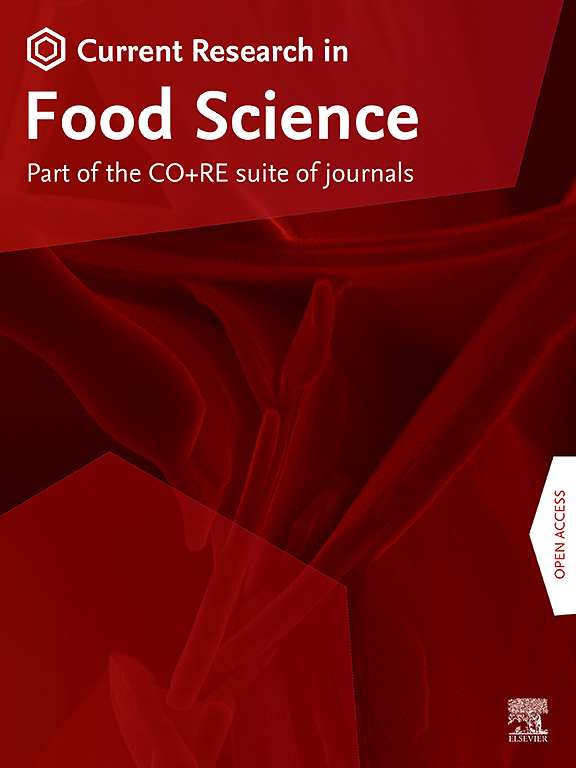Formation mechanism and characterization of hesperidin-stabilized Pickering emulsion gels
IF 7
2区 农林科学
Q1 FOOD SCIENCE & TECHNOLOGY
引用次数: 0
Abstract
This study systematically compared the Pickering emulsifying capacity of four citrus flavonoids (hesperetin, Hpt; hesperidin, Hpd; neohesperidin, Neohpd; neohesperidin dihydrochalcone, Neohpddic) using combined experimental and molecular dynamics (MD) approaches. A stable Hpd-based O/W Pickering emulsion gel was successfully developed. The Hpd rod-shaped particles exhibited the smallest particle size and demonstrated the highest emulsifying activity, primarily arising from its distinct rutinose glycoside group. But molecular dynamics simulation revealed that Hpd could significantly reduce interfacial tension and rapidly migrate to the oil-water interface, forming molecular aggregates via hydrogen bonding, which was consistent with laser confocal scanning microscopy observation. Stable emulsion gels formed when Hpd concentration (w) ≥2 % and oil phase volume fraction (φ) ≥50 %. With the increase of w and φ, the system exhibited enhanced droplet aggregation, and the apparent viscosity, gel strength, and rheological properties significantly ascended, indicating a marked enhancement in emulsion stability.

橙皮苷稳定皮克林乳液凝胶的形成机理及表征
本研究采用实验与分子动力学相结合的方法,系统比较了四种柑桔类黄酮(橙皮苷Hpt、橙皮苷Hpd、新橙皮苷Neohpd、新橙皮苷二氢查尔酮Neohpddic)的Pickering乳化能力。成功研制了一种稳定的hpd基O/W Pickering乳液凝胶。Hpd棒状颗粒具有最小的粒径和最高的乳化活性,这主要是由于其独特的芦丁糖糖苷基团。但分子动力学模拟表明,Hpd可以显著降低界面张力,并迅速迁移到油水界面,通过氢键形成分子聚集体,这与激光共聚焦扫描显微镜观察结果一致。当Hpd浓度(w)≥2%,油相体积分数(φ)≥50%时,形成稳定的乳液凝胶。随着w和φ的增大,体系的液滴聚集增强,表观粘度、凝胶强度和流变性能显著提高,表明乳液稳定性明显增强。
本文章由计算机程序翻译,如有差异,请以英文原文为准。
求助全文
约1分钟内获得全文
求助全文
来源期刊

Current Research in Food Science
Agricultural and Biological Sciences-Food Science
CiteScore
7.40
自引率
3.20%
发文量
232
审稿时长
84 days
期刊介绍:
Current Research in Food Science is an international peer-reviewed journal dedicated to advancing the breadth of knowledge in the field of food science. It serves as a platform for publishing original research articles and short communications that encompass a wide array of topics, including food chemistry, physics, microbiology, nutrition, nutraceuticals, process and package engineering, materials science, food sustainability, and food security. By covering these diverse areas, the journal aims to provide a comprehensive source of the latest scientific findings and technological advancements that are shaping the future of the food industry. The journal's scope is designed to address the multidisciplinary nature of food science, reflecting its commitment to promoting innovation and ensuring the safety and quality of the food supply.
 求助内容:
求助内容: 应助结果提醒方式:
应助结果提醒方式:


